Norman Creighton | Gold and Silversmith | Jeweller and Metalworker
Norman Creighton was born in Maffra, Victoria in 1943, attending Boisdale Consolidated School and Maffra High School where an interest in art and metalwork began.
He trained as an art and craft teacher at Melbourne Teachers College and Prahran Technical College and taught at Sunbury, Merrilands and Fawkner High Schools.
Creighton undertook night classes at the Royal Melbourne Institute of Technology in gold and silversmithing, metalwork and jewellery making. He completed the Associate Diploma and the Fellowship Diploma of Art (Gold and Silversmithing).
In 1970 he commenced teaching at Melbourne Teachers College. He also established a home studio assisted by an Australia Council Grant for crafts and jewellery workshop equipment.
In 1983 Creighton became Head of the Art School at Gippsland College of Advanced Education which amalgamated with Monash University in 1990. Creighton was appointed Professor and Head of the School of Art and Design. He retired in 1999.
From 1974 Creighton exhibited jewellery referencing geometric and architectural forms. Later he developed mounted landscape images using a wide range of materials. The last work made by Norman Creighton in 1988 was the Bicentennial Emu Egg Centrepiece. His work was collected by galleries and private collectors.
Early Life at “Strathavon”, the Creighton home near Maffra, Victoria
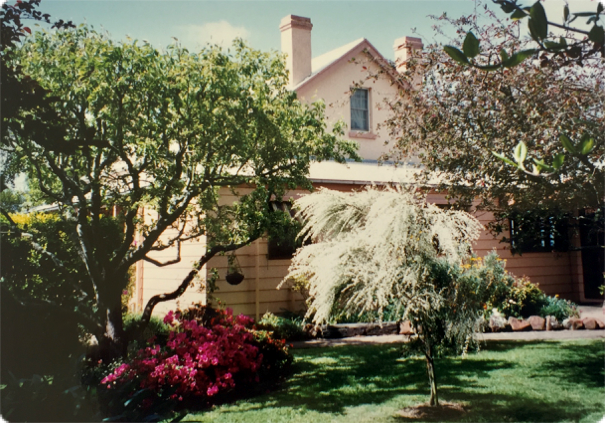
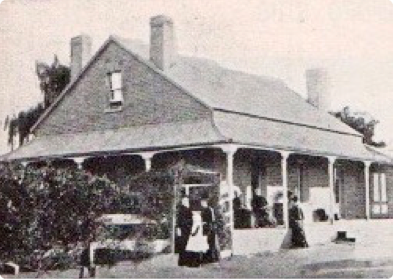
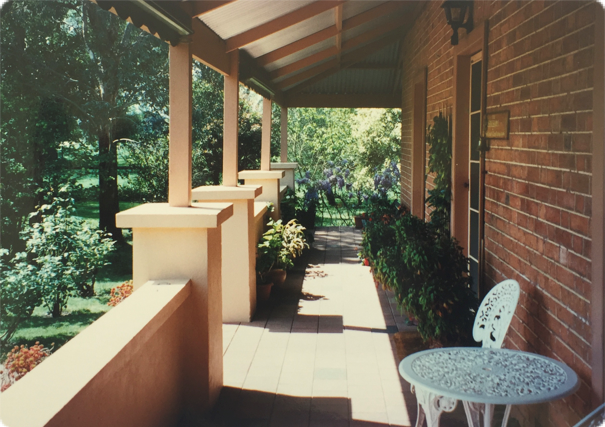
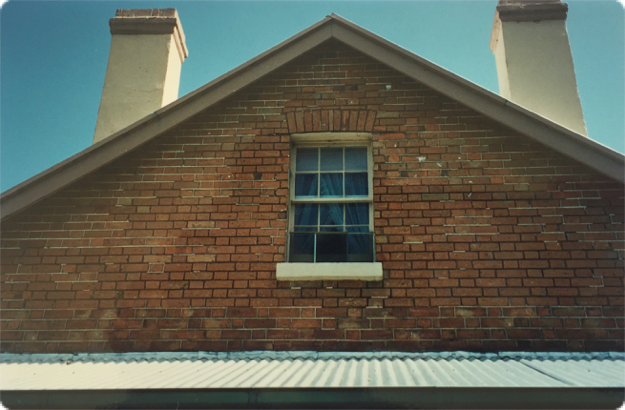
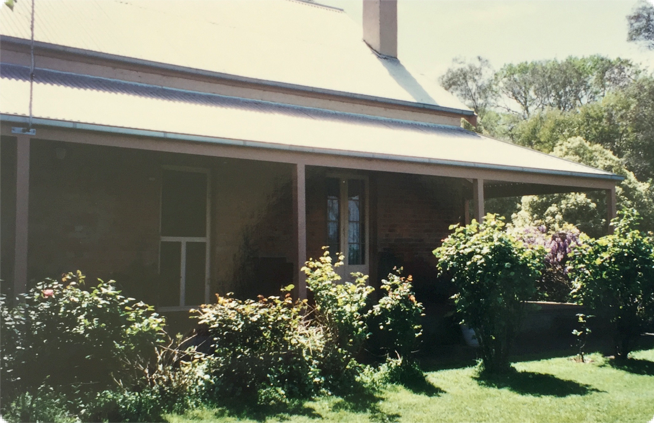
“John McMillan, who after going from the Isle of Skye to Nova Scotia with his family, later came to Gippsland in 1857 and selected “Strathavon” of 1280 acres on the west side of the Avon River. The homestead was built by John McMillan from bricks made on the property, and other materials having been brought out from Nova Scotia. The windows of the house are hand-made glass, and still to be seen today are the tuckpointing on the bricks. A staircase leads to the attic which, until recently, had the original hessian and paper walls. Underneath the house is a large cellar with a brick floor.
John McMillan died in 1882 and most of the property was sold in 1880 except 100 acres and the homestead. His son Alex McMillan took over the property and later sold it to John E. Creighton in 1918. His son Harold Creighton and his family reside there today.”
“Is Emu on the Menu: Historical Homesteads and Recipes of Gippsland”, first printed in 1965, pp 58. The property was sold in 1995.
Home Studio and Family Life
Teaching Life
Tatachilla Winery, South Australia, Late 1970s
Norman teaching at the jewellery workshop organised, along with workshops in a number of crafts, by the Crafts Council of South Australia. The workshops were held at the Tatachilla Winery in Tatachilla, South of Adelaide South Australia.
“Summer schools gave often isolated practitioners an opportunity to work with professional craftspeople and teachers in an intensive practical, theoretical - and social - experience. Melbourne jeweller and metalsmith Norman Creighton (leaning over the table) tutors at the Tatachilla summer school in South Australia in the late 1970s.”
“The Crafts Movement in Australia: A History” by Grace Cochrane (pp 225)
Exhibition Life
Exhibition of “Landscape Images” by Norman Creighton
“The present exhibition consists of eight beautifully sculptured relief forms constructed by designer/silversmith Norman Creighton. He has used the structural and visual qualities of gold, stainless steel, titanium, polyester laminate, acrylic, and sterling silver to express his philosophy of man and the environment.
Initially a silversmith and creative jeweller, Norman Creighton began exploring the versatile potential of metals and plastics some two years ago and uses jewellery design techniques to create precious objects with a difference, and of great sophistication, without destroying the simplicity of his basic philosophies of man and nature.
Inspiration for this exhibition comes from the environment around us - water, hills, and sky, man’s need for shelter, etc. The constructions are accompanied by sensitive photographs of the areas which inspired the work and visually complement each other.
Norman Creighton, who has exhibited all over Australia, is widely recognised as one of Australia’s top silversmiths and is currently teaching at Melbourne State College. He is represented in both public and private collections in Australia and overseas and has been invited, with two other jewellers, to exhibit in London later this year.
This exhibition is a must for those people, not only interested in jewellery as an art form and/or contemporary design, but for all who care about the artist-craftsman and their experimenting in their constant search for originality and a high standard of craftsmanship.
“Landscape Images” is one of the most excitingly different exhibitions we have had in the Gallery for some time, and Norman Creighton has achieved, in his work, and intellectual and visual challenge. Several of the exhibits are for sale.” - Pam Gullifer, Director Ararat Gallery
Exhibition Opening night of Invited Gippsland Craftsmen, 1980.
(L-R) Tony Dyer, Norman Creighton, Gerry Cummins, Annemieke Mein, Hedley Potts, Alan Wilson.” | “Hindsight_Gippsland Art Gallery: History and Collections 1965-2015” pp 55 | Photograph: Annemieke Mein
Public lecture: In association with exhibition “Survey of Contemporary Australian Crafts” | Queensland Art Gallery 1982
Exhibited: “Gippsland Images”
Sale Regional Arts Centre, February 1976
Exhibition opened by Mr. John Leslie, Member of the Advisory Committee, Victorian Ministry for the Arts
Wall Panel
“High Plains”
Detail: C 1975
Silver and acrylic on mount board.
The hut is fabricated and formed element fixed to the mount board
Collection. Gippsland Art Gallery. Purchased 1976
Awards and Recognition
CLICK TO EXPAND
“Australian Farm Game” - 1979 | CLICK TO EXPAND
Brass, copper, nickel, sterling silver, titanium
33 mm diameter each piece. 170 mm x 170 mm board
Exhibited: International Jewellery Invitational, Tokyo, Japan (invited) and exhibited in Tokyo Japan, Kyoto Japan,
Hong Kong, Manilla Phillipines, Seoul Republic of Korea
Crafts Board of Australia Collection 1980.
National Gallery of Australia, Canberra ACT
“After an extensive study tour to the United States in 1976, Creighton’s work became more sculptural and illustrative, reflecting personal rural themes of his childhood… The work was mounted on panels for the wall or created as table sculptures.”
“Place and Adornment: A History of Contemporary Jewellery in Australia and New Zealand” by Damian Skinner and Kevin Murray 2014, pp. 53-54
“…the largest of a number of similar pieces expressing concern about the plight of rural Australia, where Creighton had grown up and where farming was losing its economic importance.”
“The Crafts Movement in Australia: A History” by Grace Cochrane pp.197
“I make individual one-off works which are inspired by my upbringing in the country. The “Farm Game” series are tabletop pieces - pieces for a game with no rules. These sculptural works are exploring the power and potential of the miniature forms that jewellers and silversmiths have always used, with the introduction of new qualities brought about with the use of titanium.”
Norman Creighton
Catalogue: International Jewellery Art Exhibition, Tokyo 1979
“A group of four artists emerged in Victoria in 1972, dedicated to elevating the status of jewelry in Australia: they were Norman Creighton, Marian Hosking, Rex Keogh and their teacher Wolf Wennrich. What holds them together is a shared reaction against the mediocrity of mass-produced goods and a belief in the value of fellowship amongst artists.
Since that time the Group has exhibited widely in Australia, producing work in a variety of materials that include acrylic, steel and traditional alloys. Like Bury, Maierhofer and Rothmann, their work questions wearability and function.”
“Contemporary Jewelry: A Critical Assessment 1945-1975” by Ralph Turner 1976 Chapter 4: Reaction and Revolt 1970-1975, pp 100.
“Coorong” 1975 | CLICK TO EXPAND
Exhibited: Crafts Victoria 75, A survey of Contemporary Victorian Crafts
National Gallery of Victoria 9 July - 3 August 1975 | Creighton Collection
“I enjoy making small objects or miniature images and jewellery. I usually work with arrangements of forms in a graphic way. The grid is the reference on which I impose the physical elements of the landscape.”
Invitation | Special Awards for Art 1967 | RMIT Melbourne
Award Winners
Jewellery: The M. Herwitz Award
Norman A. Creighton (Awarded for the bracelet)
CLICK TO EXPAND | “Innovative in Art and Outlook”
CLICK TO EXPAND
Sketch:
“Australian Bicentennial Emu Egg Centrepiece 1988”
“Australian Bicentennial Emu Egg Centrepiece 1988” | CLICK TO EXPAND
Emu egg, sterling silver | 18 ct gold, brass, copper, steel, acrylic, wood and paint
“…Presentation pieces of all varieties proliferated in early Australian silver. Congratulatory in intent and made in precious materials they appear as the very embodiment of colonial pride and optimism.
…The most exotic and typical presentation piece was the mounted emu egg.”
From the Curatorial Notes
Australian Silver Collection
Judith O’Callaghan
Curator of Metalwork
National Gallery of Victoria
Jeremy Creighton at Australian National Gallery, Canberra, where this piece is on display.
CLICK TO EXPAND
CLICK TO EXPAND
Review of “View from the Verandah”, 2008
Dr. Christiane Keller, Collection Manager John Curtin Gallery
CLICK TO EXPAND
Maker’s Mark | “Marks on Australian Silver 1950 - 2005”
by Christine Erratt, pp 74
CLICK TO EXPAND
“Australian Jewellery - European Tour 1982-1983”
Exhibition Selector: Dick Richards, Curator of Decorative Arts, Art Gallery of South Australia
CLICK TO EXPAND
Neckpiece | Winner of the Herwitz Prize for Design RMIT 1969
Exhibited: Graduate Show RMIT, Paul Bram Gallery 1968
“Melbourne Modern: European Art and Design at RMIT Since 1945”, RMIT Gallery 21 June - 17 August 2019 Collection: RMIT
CLICK TO EXPAND
“Bushy Park” | Ring Set 1982
Collection: Museum of Applied Arts and Sciences
Powerhouse Museum, Sydney, NSW
Bushy Park is a small community near Boisdale in Gippsland. Norman’s mother Faye Creighton (nee Faith Dell) was born at Bushy Park in 1918 and grew up there. She was one of eleven children born to George and Elizabeth Dell. George worked as a railway ganger on the branch line which ran through Bushy Park, the train delivered milk from the dairy farms to Maffra. Elizabeth ran the Bushy Park post office and telephone switch.
RMIT Art Collection storage vault | CLICK TO EXPAND
A family reunion in Melbourne in July 2019 coincided with the exhibition “Melbourne Modern: European Art and Design at RMIT since 1945” in the RMIT Gallery, Melbourne. The family viewed Norman’s silver neckpiece (1968) which was on display and also his silver bracelet (1967) which was in the storage vault.
Norman, Natalie and Jeremy viewing the bracelet.
CLICK TO EXPAND
Ararat Gallery Newsletter, April 1976
“Landscape Images”
“The present exhibition consists of eight beautifully sculptured relief forms constructed by designer/silversmith Norman Creighton.
He has used the structural and visual qualities of gold, stainless steel, titanium, polyester laminate, acrylic, and sterling silver to express his philosophy of man and the environment.
Initially a silversmith and creative jeweller, Norman Creighton began exploring the versatile potential of metals and plastics some two years ago and uses jewellery design techniques to create precious objects with a difference, and of great sophistication, without destroying the simplicity of his basic philosophies of man and nature.
Inspiration for this exhibition comes from the environment around us - water, hills, and sky, man’s need for shelter, etc. The constructions are accompanied by sensitive photographs of the areas which inspired the work and visually complement each other.
Norman Creighton, who has exhibited all over Australia, is widely recognised as one of Australia’s top silversmiths and is currently teaching at Melbourne State College. He is represented in both public and private collections in Australia and overseas and has been invited, with two other jewellers, to exhibit in London later this year.
This exhibition is a must for those people, not only interested in jewellery as an art form and/or contemporary design, but for all who care about the artist-craftsman and their experimenting in their constant search for originality and a high standard of craftsmanship.
“Landscape Images” is one of the most excitingly different exhibitions we have had in the Gallery for some time, and Norman Creighton has achieved, in his work, an intellectual and visual challenge. Several of the exhibits are for sale.”
Pam Gullifer, Director Ararat Gallery












